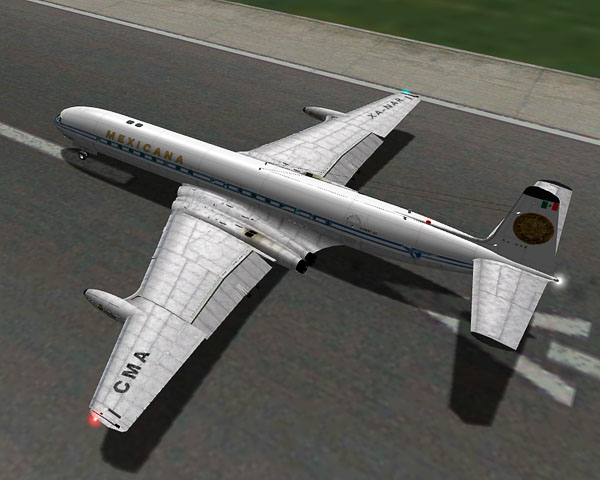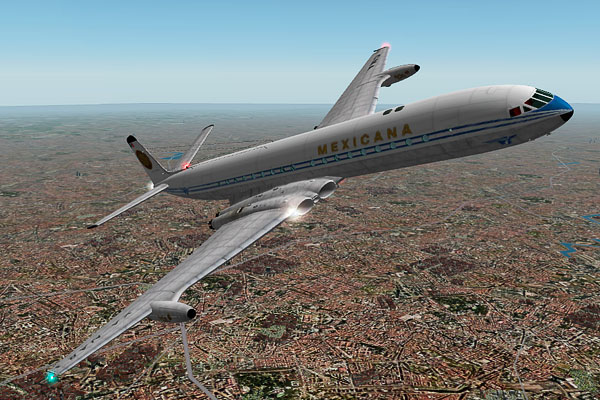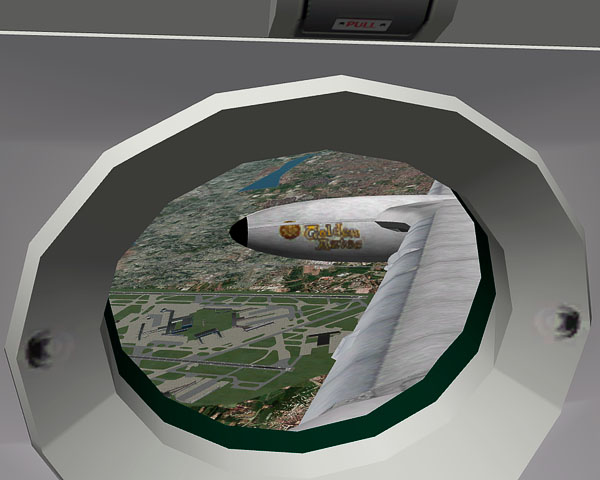Comet 4c - Mexicana
06/02/09 22:40

First Airline Livery - Mexicana
The first Comet 4C was built for Mexicana. Construction number 6424 first flew on 31 October 1959, before being delivered to Mexicana in June 1960, registration XA-NAR. The long gap was because this airframe also had to do the trials for this new kind of Comet, which combined the long-range, high-altitude wings from the original Comet 4 with the long, higher-capacity fuselage of the Comet 4B. C/N 6424 is also significant in being the only surviving Comet in North America, and it’s having the most meticulous bare-metal restoration at the Museum of Flight in Seattle.At the time, Pan American Airlines owned 40% of Mexicana. Pan Am had come very close to placing a large order for the Comet 3, sadly scuppered by the Comet 1 tragedies. It’s a great shame, because the Comet 3 was already undergoing trials as early as 1954, nearly four years ahead of Boeing. Had the deal been a success, it would have triggered many other sales in America, and de Havilland’s future would have been very different. As it was, Pan Am had no choice but to place orders for the 707 while it was still on the drawing board. However, in case the 707 was late, or had problems, the Mexicana livery was an adaptation of the Pan Am design, so they could be hastily transferred if Pan Am had to use them. That never happened. Mexicana Comets flew between Mexico City and Los Angeles, as well as Chicago, Dallas, New York, San Francisco, San Antonio and Havana. They remained in service until 1970.
Detailed facts about this airframe, and all the other Comets, are from The DH.106 Comet, by Martin Painter, ISBN 0 85130 330 7
For X-Plane, I created the panel lines and metal textures some time ago, but I found my templates needed quite a lot of changes when I started using them in earnest. Especially the nose, which has tapering coach lines coming to a nice, sharp point. I found it impossible to make it look right only using the normal side-elevation, and had to map those surfaces as a front elevation, spending hours making all the lines meet again. Thankfully, nearly all the other liveries have either a black radar dome, or at least a plain-coloured one.

My process is to create the outlines and basic shapes using Adobe Illustrator, because it’s infinitely scaleable. The output from Illustrator can be any resolution I like, and the result will always be smooth. Currently, I send a 300 dpi output to Photoshop, where I apply lighting and metal effects, then reduce the size down to 72 dpi, 1024x1024 pixels.
I keep finding better images of the three Mexicana 4Cs, XA-NAR, XA-NAS and XA-NAT so details may change, but essentially, this is how it’s going to be.



--
GMM-P (06/02/2009)
blog comments powered by Disqus
